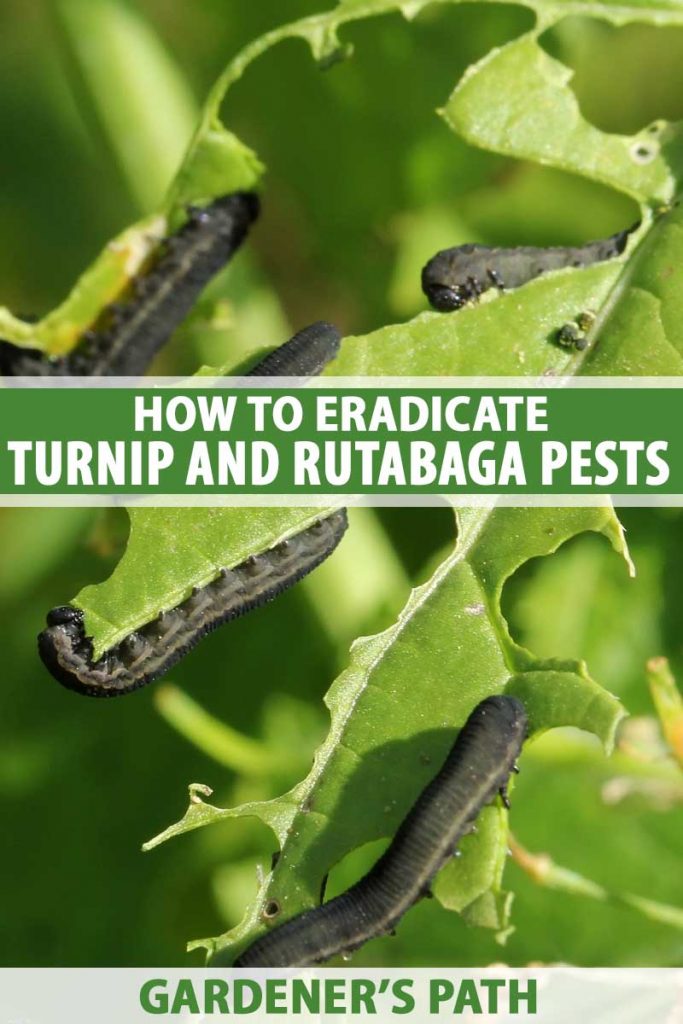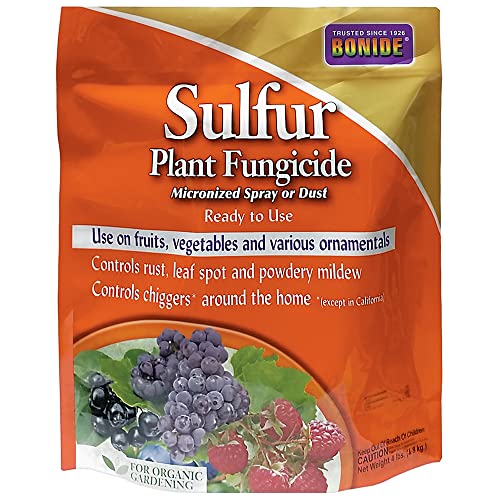Insecticide For Turnip Greens
Turnips are vulnerable to several pests, including cabbage aphids and root maggots, that plague other crucifers.
In addition, other insects are more annoyances than serious pests. Examples include whiteflies and caterpillars that feed on the turnip foliage.

We link to vendors to help you find relevant products. If you buy from one of our links, we may earn a commission.
We provide an overview of the major insect pests of turnips and rutabagas and advice on how to control them.
Aphids
While several kinds of aphids can plague turnip crops, including the turnip aphid (Lipaphis erysimi), the black bean aphid (Aphis fabae), and the green peach aphid (Myzus persicae), the cabbage aphid (Brevicoryne brassicaea) is particularly fierce.
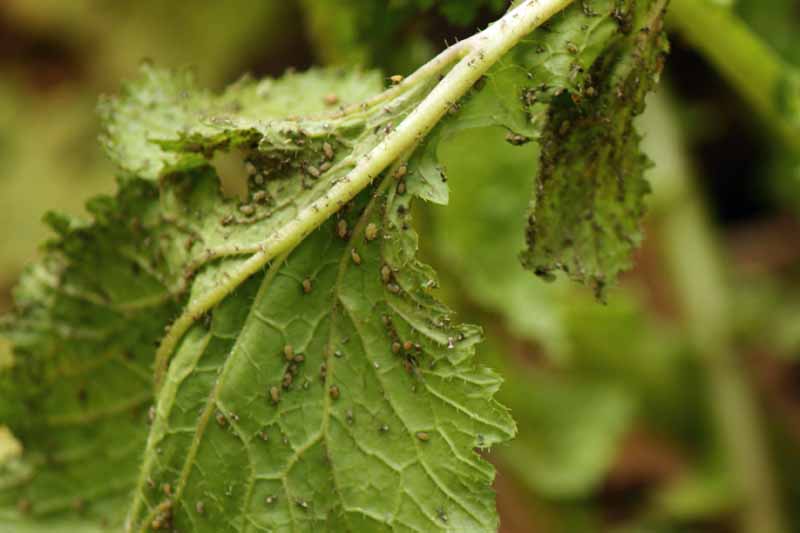
This small gray-green insect doesn’t look very scary. However, the populations of the cabbage aphid can build to large levels, and it can stunt the growth – or in the worst-case scenario – kill your plants!
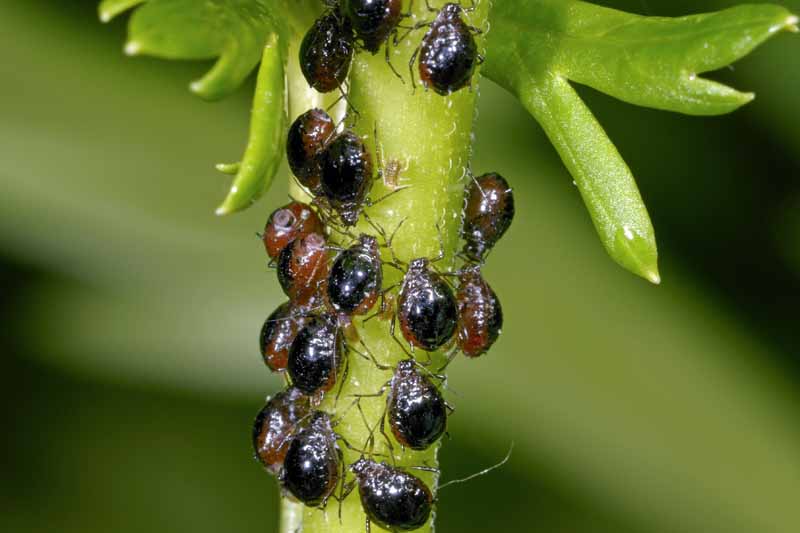
You can minimize the chances of infection by checking your transplants for aphids before you plant them. If you do find aphids, try to prune them out.
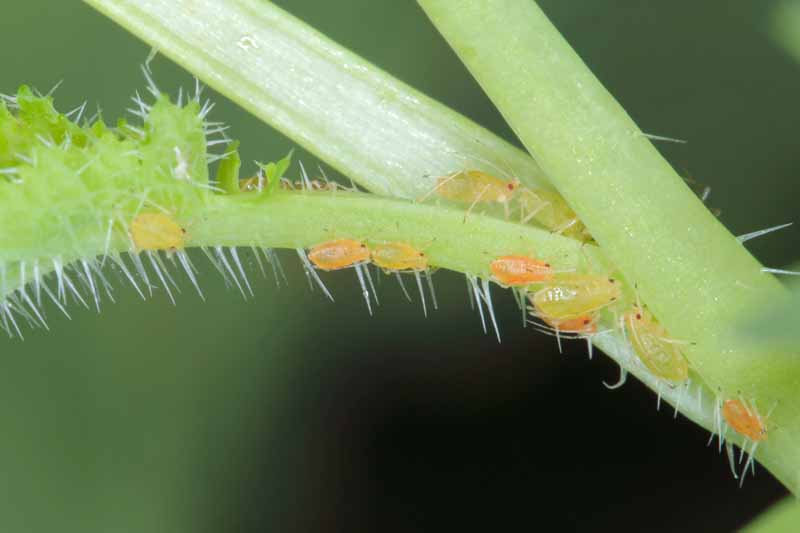
An option to prevent these pests from settling on your plants is to surround the turnip plants with reflective mulch like silver-colored plastic.
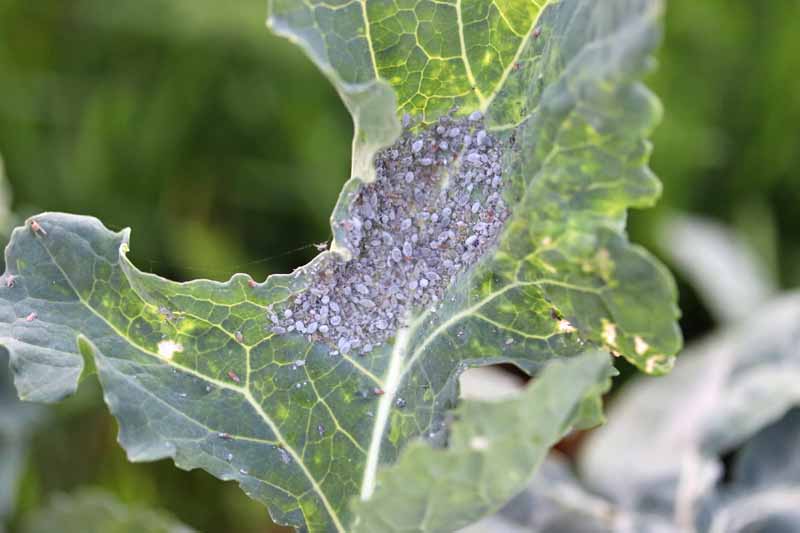
A popular and effective biological control is to release benficial, aphid-devouring insects such as soldier beetles, ladybug beetles, big-eyed bugs, and hover flies.

If the populations get too large, you can treat your plants with some type of insecticide. Oils like neem or canola oil or insecticidal soaps will generally work to control the cabbage aphids infesting your turnips.
If you do apply insecticidal soap, do so in cloudy weather that is less than 90 F.
Cabbage Flies and Root Maggots (Delia spp.)
An adult root maggot (known as a cabbage fly, cabbage root fly, root fly or turnip fly) looks like a housefly, while their maggots are white or white-yellow grubs that are approximately 0.3 inches long, tapering toward the head.
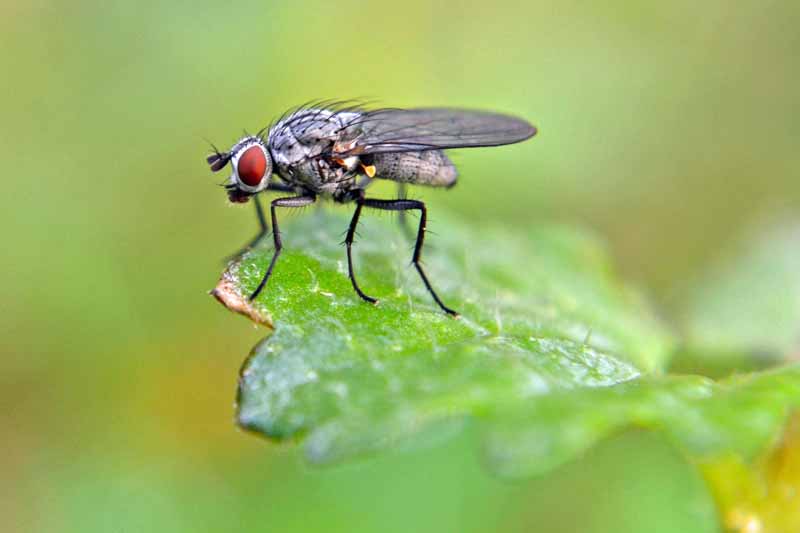
These fearsome pests can cause extensive root damage to rutabagas and turnips. In fact, the crops can be too badly damaged to harvest them.
Another bummer about these insects is that the tunnels they dig in the roots predispose the plants to rot by soil fungi.
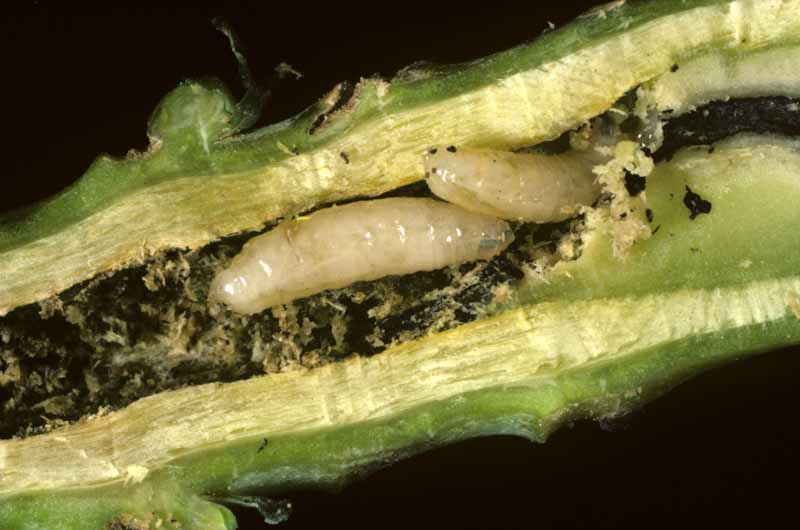
The insects overwinter in the soil as pupae. If they are not present in your soil, you have some chance of fending them off by using floating row covers to prevent the female flies from laying eggs.
Seal the edges with soil to keep the females out. Row covers work best with spring crops. If you use them in the fall, your crop may have lower yields and poorer root quality.
If you are using a row cover, make sure that no aphids are present because the aphids will increase in numbers without their natural enemies to keep them in check.
If your crop is severely damaged, your only choice is to remove and destroy all the crop debris. No pesticides are registered for root maggots that can be used by home gardeners in the US.
Another thing to worry about with root maggots is that if the temperature is cool in the early fall, the eggs from late-season flies will survive.
Read more about cabbage fly and maggot control here.
Cabbage Whiteflies (Aleyrodes proletella)
If you see clouds of tiny white insects flying up from your turnips whenever you disturb them, your plants are infested with cabbage whiteflies.
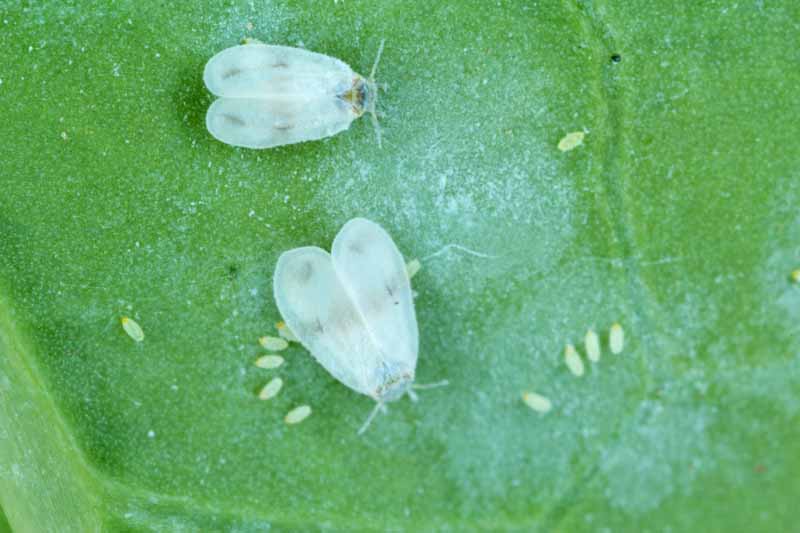
The bottom of the leaves will look like they have white scales. These are the nymphs of the cabbage whiteflies.
You can tolerate small amounts of these insects, since they only affect the leaves.
However, heavy infestations can result in a black sooty mold on top of the leaves. If this is the case, you should implement control measures.
It is important to note that this pest is not the same as the greenhouse whitefly (Trialeurodes vaporariorum). However, similar types of predatory insects’ prey on the whiteflies.
For this reason, you should try and avoid using pesticides to control these whiteflies. These types of treatments can kill the natural predators and cause the populations of the whiteflies to rebound.
Organic sprays are a good choice because they will kill the whiteflies without affecting insects like adult ladybugs. You can use horticultural oils or insecticidal soaps and cause very little harm to beneficial organisms.
If you use insecticidal soaps, be sure and apply them when the weather is cloudy, and temperatures are less than 90 F. Avoiding the sun will protect your turnips, since treatment with insecticidal soaps can make them sensitive to the sun.
Flea Beetles (Phyllotreta spp.)
Such tiny insects and so much damage. Flea beetles don’t look very scary. They are 1.5-3 mm dark colored (dark, shiny gree to black) insects that jump when disturbed.
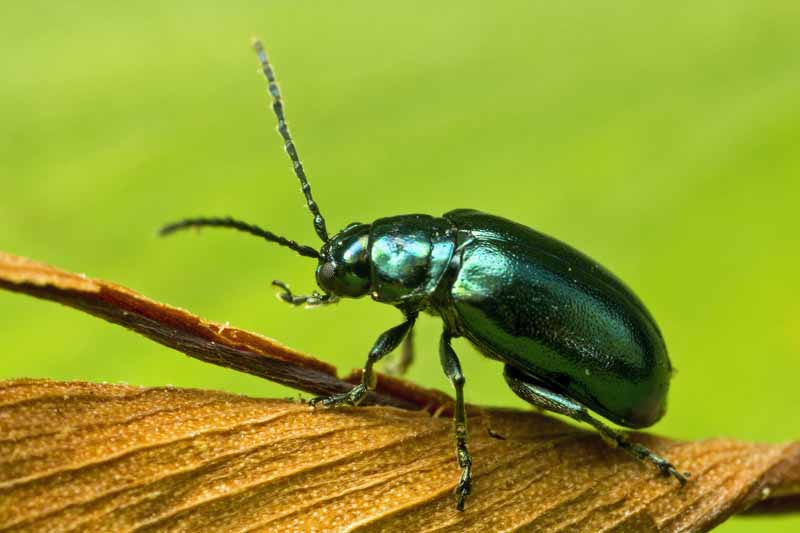
However, flea beetles chew holes in the leaves that make them look like they have been shot with buckshot. Young plants are more susceptible than mature ones.
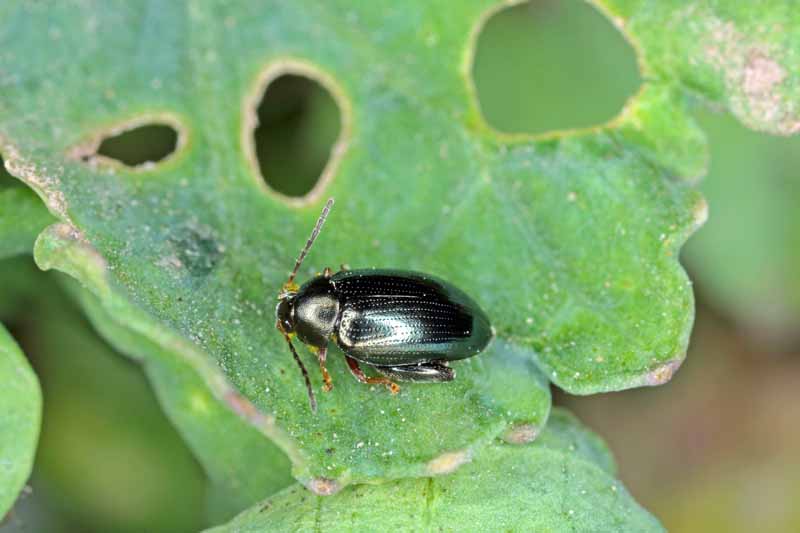
And a specific species, the cabbage stem flea beetle (Psylliodes chrysocephala), is not just content to devour cole crops as an adult.
It lays its eggs at the base of many different brassicas (including turnips and rutabagas) where they crawl into the stem as larvae and feed on the host plants.
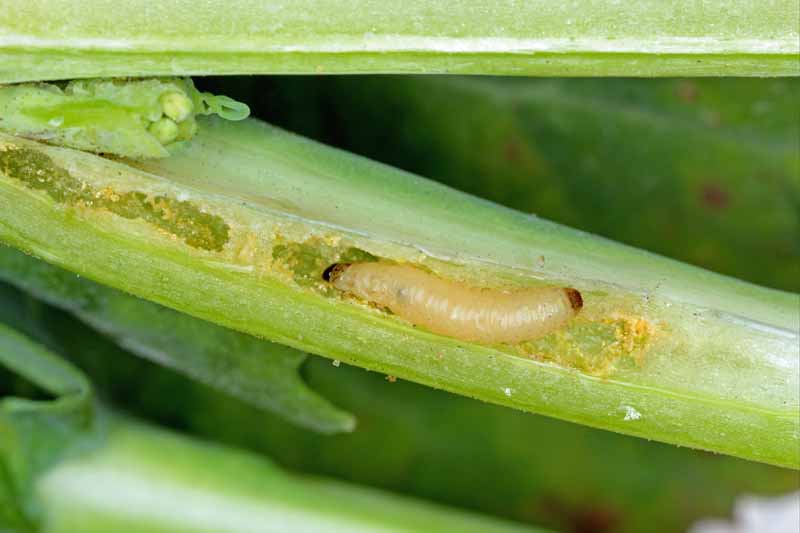
You may be able to protect the young plants if you use floating row covers before the beetles emerge in the spring. Trap crops are an option, too – cruciferous ones work best.
Another option is to apply a thick layer of mulch. Organic growers can use oil like neem or diatomaceous earth.
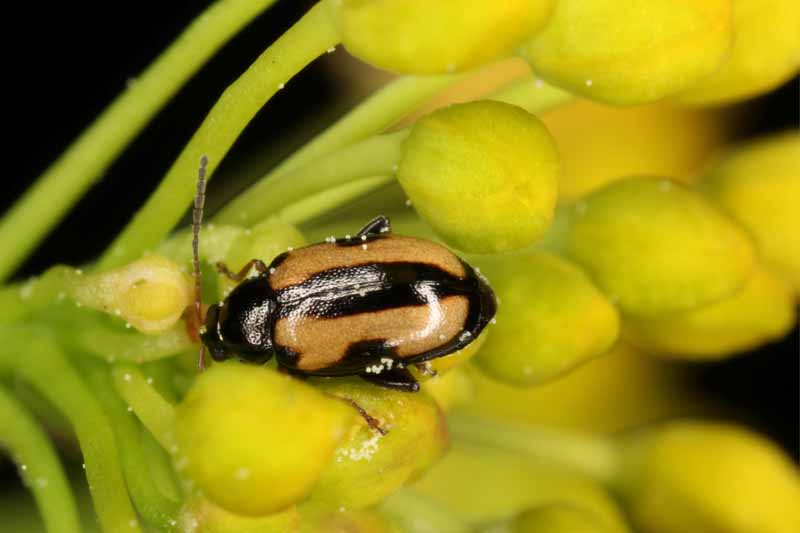
Insecticidal controls include spinosad, which is available in organic formulations, carbaryl, permethrin, and befenthrin. They will work for approximately a week, but then you will need to reapply them.
Slugs
Unfortunately, slugs thrive in the cool humid weather that turnips thrive in, and these slimy pests will voraciously feed on all cruciferous vegetables.
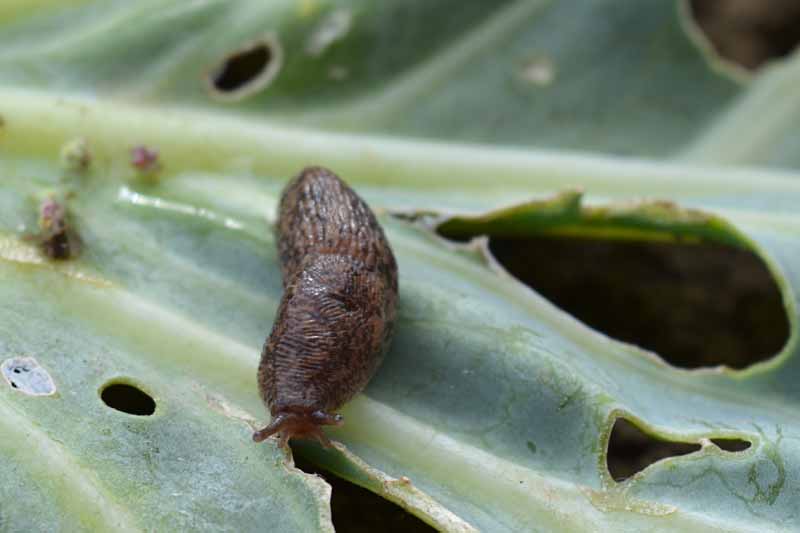
If not controlled, slugs can destroy your whole crop in just a few days.
However, all hope is not lost! You have options ranging from beer traps to baits and beneficial nematodes.
Read more about controlling slugs here.
Turnip Sawfly (Athalia rosae)
The turnip sawfly was an extremely serious pest in Britain in the 1700 and 1800s. Reports abounded of clouds of these pests that “darken the sky” and were “like flights of bees.”

This fearsome pest looks relatively harmless. The orange adult is about 7 mm long with a black head. Its larvae look like black caterpillars.
However, a single female can lay up to 300 eggs in the turnip leaves. After they hatch, the larvae start out feeding inside the leaf, but then they feed on the underside. Eventually, just a skeleton of the leaf remains.
The larvae pupate in the soil for 10-13 days before the next generation of adults emerge.
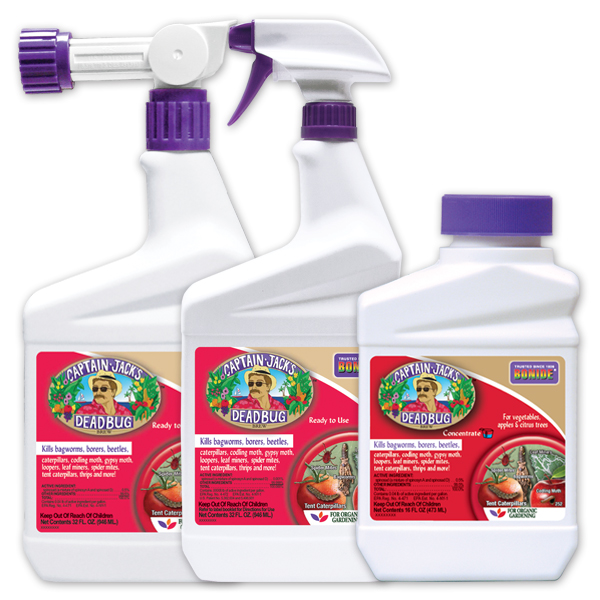
BONIDE® Captain Jack’s Deadbug Brew™ (Spinosad)
Bt will not control these pests. Although they look like caterpillars, they are a different type of insect. You can use Spinosad to control turnip sawflies.
Wireworms (species of Aeolus, Annchastus, Melanotus, or Limonius)
These nasty pests can infest the soil for up to five years as yellow-brown, shiny larvae. They can kill the seedlings or girdle the stems of the turnip or rutabaga plants.
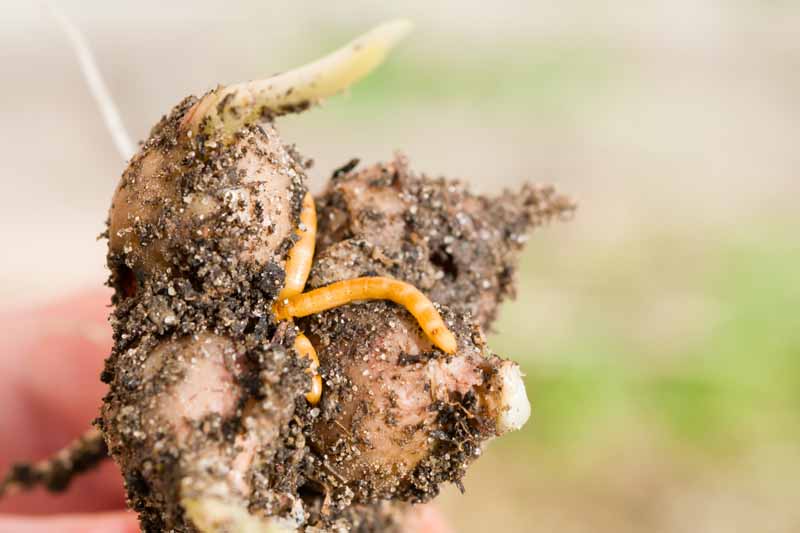
There is no way to control wireworms once a crop is growing. You need to treat with insecticide at preplanting or as a seed treatment.
If you know that your soil is infested with wireworms, leave the field fallow over the summer and frequently till it.
Rotate to a crop that is not a host for wireworms, i.e., avoid cereals.
Insecticide For Turnip Greens
Turnip greens are a very popular vegetable. They’re versatile, delicious, and can be served in so many ways. But as with all vegetables, turnip greens require proper care to ensure that they are safe to eat.
Turnip greens are vulnerable to insect damage, which can result in an unpleasant texture and taste if not treated properly. The most common insects that affect turnip greens are aphids, caterpillars, leafhoppers, mealybugs, thrips and whiteflies. These insects can cause leaves to become distorted or discolored. The best way to protect your crop of turnip greens is with an insecticide spray that is safe for use on edible plants such as turnips.
List Of Insecticide For Turnip Greens
- Kills lawn insects: use outdoors on lawns and as a band treatment around your house foundation
- Kills more than 100 insect types: kills insects above and below ground, including ants (excluding harvester and pharaoh ants), crickets, armyworms, cutworms, grubs, ticks and others as listed
- Kills on contact: treat when insects first appear or when you notice lawn damage
- Controls grubs: treat any time between late July and early October
- Granular formula: distribute granules uniformly around the treatment area; water in lightly immediately after application
Additional Info :
| Item Dimensions | |
| Height | 18.75 Inches |
| Width | 2.75 Inches |
| Length | 11 Inches |
| Weight | 10 Pounds |
- CONTROLS A VARIETY OF INSECTS AND DISEASES – Sulfur Plant Fungicide is effective against rust, leaf spot, powdery mildew, chiggers, thrips, scale, and listed mites.
- USE ON FRUITS, VEGETABLES, AND ORNAMENTALS – Product is approved for organic gardening and can be used on apples, beans, cherries, berries, peas, grapes, strawberries, and many more fruits and vegetables in your garden.
- SAFE FOR ANIMALS – Helps control fleas and ticks on dogs, horses, cattle, swine, sheep, and goats. Can also be used to control depluming mites on chickens, turkeys, ducks, geese, pigeons, and other game birds.
- GREATER EFFICIENCY – The extremely fine particle size contributes to a uniform film-forming layer, better adhesion and more even distribution of particles over fruit and leaf surfaces, resulting in greater efficiency.
- READY TO USE – This product is conveniently ready to use when it arrives. It can be applied to plants as either a micronized liquid spray or dust.
Additional Info :
| Color | Ready-to-Use |
| Item Dimensions | |
| Height | 9 Inches |
| Width | 2.5 Inches |
| Length | 6.5 Inches |
| Weight | 4 Pounds |
- FROM AMERICA’s 1 FASTEST GROWING SUPPLEMENT BRAND – Purely Inspired Organic Greens Powder smoothie mix delivers 39 superfoods, 18 vitamins & minerals and active probiotics with just 1 scoop. 40 Calories per serving
- CLEAN INGREDIENTS – Certified USDA Organic Greens Powder, Gluten Free, Non-GMO, Vegan Friendly. No artificial sweeteners, colors or flavors in this green smoothie powder
- EASY TO USE – Mix in a glass or shaker bottle with water, juice, smoothies (with Purely Inspired Organic Protein), almond milk, oat milk or your non-dairy drink of choice. Organic Greens plus superfoods powder can also be added to soups and sauces
- CONVENIENT – It’s a simple way to add superfoods, greens, grains, sprouts, fruits and veggies to your day with just one serving. Healthy superfood powder on the go for women and men in an easy-to-consume greens powder smoothie mix
- ANTIOXIDANTS – Contains antioxidant vitamins C and E
- ORGANIC INGREDIENTS – Banana, Tomato, Beet, Sweet Potato, Strawberry, Broccoli, Spinach, Carrot, Cherry, Apple, Pineapple, Whole Grains, Radish Sprout, Alfalfa, Chia, Pumpkin, Sunflower, Lentil, Garbanzo, Flaxseed, Quinoa, Wheatgrass and many more
Additional Info :
| Color | Greens Powder |
| Item Dimensions | |
| Height | 4.49 Inches |
| Width | 3.69 Inches |
| Length | 3.69 Inches |
| Weight | 0.61 Pounds |
| Release Date | 2017-01-13T00:00:01Z |
- READY TO USE – These convenient granules are ready for use and provide effective, long lasting insect control for up to 8 weeks in your flower beds, roses, and shrubs. Apply it every 8 weeks throughout the growing season for optimal protection.
- PEST CONTROL – Bonide Systemic Granules kill tough houseplant pests like fungus, gnats, mealybug, whitefly, termite, aphids, and more. Be considerate of animals and bugs like hummingbirds and bees that could be harmed from use of this product.
- NO SPRAYING – There is no mess associated with this pesticide because it is not a spray. The dry-application granules are easy to use, control, and apply without worrying about destroying clothing or other plants.
- FOR NON-EDIBLE PLANTS – This insect killer treatment is not meant for vegetable or fruit plants. This product is labeled for use on flower beds, roses, shrubs, and the like, but it is not labeled for use on any edibles.
- HOW IT WORKS – After incorporating the granules into the soil and watering them in, the pesticide is absorbed by the roots where it moves through the plants to assist in protection against the listed bugs.
Additional Info :
| Item Dimensions | |
| Height | 1 Inches |
| Width | 1 Inches |
| Length | 1 Inches |
| Weight | 1 Pounds |
